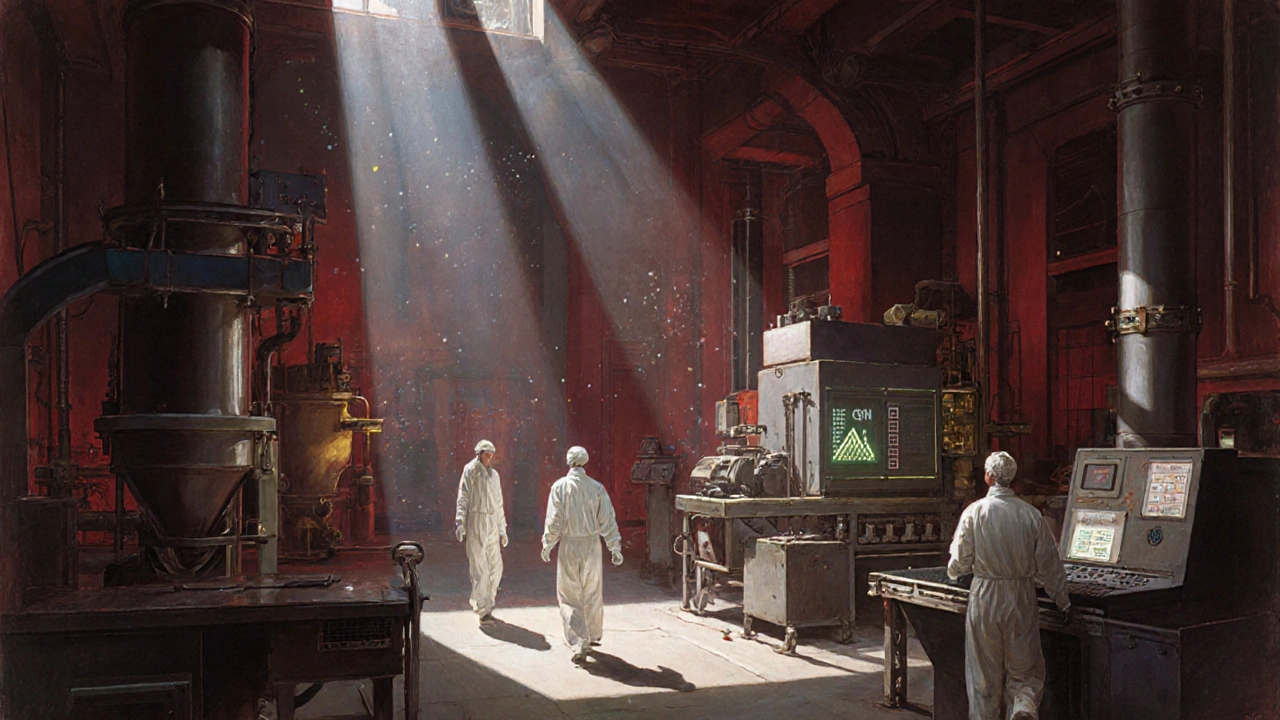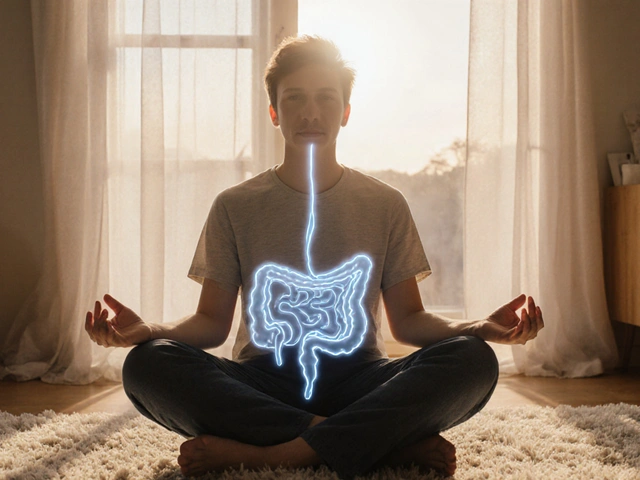Every pill you take - whether it’s a brand-name drug or a generic - should work the same way. But how do you know it’s real? In 2025, counterfeit drugs are still a silent threat, especially in the global supply chain for generic medications. The good news? Strict manufacturing standards built into every step of production make fake drugs harder to produce, harder to hide, and easier to catch. This isn’t about luck or last-minute testing. It’s about design - quality built in from the start.
Why Quality Can’t Be Tested In
You can’t tell if a pill is counterfeit by looking at it. A fake ibuprofen tablet might look identical to the real one - same color, same logo, same packaging. But it could contain no active ingredient, the wrong chemical form, or toxic contaminants. That’s why the FDA says it clearly: quality cannot be tested into a finished product. Testing the final batch won’t catch everything. If a batch is contaminated or improperly mixed, you might test 100 tablets and still miss the one that’s bad. That’s why the system was built differently. Since the 1960s, the U.S. and global health agencies have required manufacturers to follow Current Good Manufacturing Practices (cGMP). These aren’t suggestions. They’re legal requirements. Every step - from the raw materials arriving at the plant to the pills being sealed in blister packs - must be controlled, documented, and verified. The goal? Make it nearly impossible to slip a counterfeit into the system without leaving a trace.The SQUIPP Framework: What Gets Measured
Generic drug makers don’t just need to match the brand-name drug’s effect. They need to match it down to the molecular level. That’s where SQUIPP comes in: Safety, Quality, Identity, Potency, and Purity. Each letter represents a non-negotiable checkpoint.- Identity: Does the pill contain the right chemical? Infrared spectroscopy and high-performance liquid chromatography (HPLC) test each batch to confirm the active ingredient matches the reference drug with 99.9% accuracy.
- Potency: Is there enough of the active ingredient? Too little means the drug won’t work. Too much could be dangerous. Each tablet must contain between 90% and 110% of the labeled amount.
- Purity: Are there harmful impurities? In 2018, a batch of valsartan blood pressure pills was recalled because a cancer-causing impurity slipped through. That’s why labs now test for even trace contaminants using mass spectrometry.
- Quality: Does the pill dissolve properly? A tablet that doesn’t break down in the stomach won’t be absorbed. Dissolution testing ensures 80% of the drug releases within 30 to 45 minutes.
- Safety: Is the manufacturing environment clean? Clean rooms must meet ISO Class 5 standards - fewer than 3,520 airborne particles per cubic meter. Workers wear full suits. Air is filtered. Surfaces are swabbed hourly.
How Digital Tracking Stops Fakes Before They Ship
Physical testing alone isn’t enough. Counterfeiters are getting smarter. Some now copy the chemical makeup of real drugs - but use the wrong crystal form, which affects how the drug is absorbed. That’s where digital systems come in. Since 2023, every prescription drug package sold in the U.S. must have a unique serial number. This isn’t just a barcode. It’s a digital fingerprint tied to the batch, the production line, the date, and the location. When a pharmacy scans the package, the system checks it against a national database. If the number doesn’t match or the package has been tampered with, the system flags it immediately. This system, required by the Drug Supply Chain Security Act, is now used by 92% of the top 50 generic manufacturers. Smaller companies are catching up, but many still struggle with the cost - implementing full track-and-trace can run $3.5 million per facility. Still, the payoff is clear: in countries with full serialization, counterfeit drug rates are below 0.1%. In places without it, they can hit 30%.
Electronic Systems: The Brain Behind Quality Control
Managing all this data - thousands of tests per batch, hundreds of environmental readings, dozens of equipment logs - requires software. That’s where Electronic Quality Management Systems (eQMS) come in. By 2023, 78% of major generic manufacturers had moved from paper logs to cloud-based eQMS platforms like Veeva QualityOne or TrackWise. These systems don’t just store data. They analyze it in real time. If a machine’s temperature drifts by 2 degrees during tablet pressing, the system auto-flags it. If a raw material batch fails a purity test, it blocks the entire production line. One quality manager at Teva told a forum in 2023 that switching to eQMS cut their deviation resolution time from 14 days to just 48 hours. But it wasn’t easy. The initial setup took 18 months and cost $2.3 million. For smaller companies, that’s a major hurdle. Still, the ROI is clear: fewer recalls, faster audits, and better detection of fakes.Where the System Still Has Gaps
No system is perfect. The biggest blind spot? Polymorphs - different crystal structures of the same chemical. Two pills can have identical chemical formulas but behave differently in the body if one uses the wrong crystal form. Standard tests won’t catch this unless labs are specifically looking for it. That’s why the European Medicines Agency requires a Qualified Person (QP) to personally sign off on every batch before it’s released. The U.S. system relies more on process validation - proving the entire manufacturing method is reliable. Both work, but the QP system adds a human layer of accountability. Another issue: global inconsistency. In the U.S., 94% of generic drug facilities pass FDA inspections. In India, it’s 78%. In China, it’s 65%. Many counterfeit drugs come from unregulated or under-inspected plants. Interpol seized $21 million in fake medicines in 2022 - 78% of them falsely labeled as generics.
What’s Next: AI, Blockchain, and Molecular Tags
The fight against counterfeits is going high-tech. The FDA is investing $150 million in AI tools that can spot anomalies in production data before a batch even fails a test. IBM and Siemens are training AI models to predict contamination risks based on machine vibrations, humidity levels, and operator behavior. In Africa, the WHO is testing blockchain-based verification for antimalarial generics. Each dose gets a digital record that patients can scan with a phone. If it’s fake, the system alerts health workers. Even more advanced? Molecular taggants - tiny, invisible markers added to the drug itself. These can be detected with a handheld scanner and are nearly impossible to copy. By 2026, the EU will require quantum-resistant encryption on all drug packaging to prevent hackers from forging digital codes.Why This Matters to You
You might think generic drugs are cheaper because they’re lower quality. They’re not. When made under proper standards, they’re just as safe and effective as brand-name drugs. The FDA says adverse event rates for generics are actually slightly lower than for brand-name drugs - 0.02% versus 0.03%. The real difference? Cost. Generics make up 90% of prescriptions in the U.S. but only 23% of spending. That’s because quality control keeps them safe - and prevents billions in losses from fakes. Every year, these systems stop an estimated $200 billion worth of counterfeit drugs from reaching patients. If you’re buying generics, you’re not taking a risk. You’re trusting a system that’s been built over decades, tested in labs, and enforced by regulators. But that system only works if it’s funded, monitored, and improved. That’s why supporting strong drug regulations isn’t just about cost - it’s about safety.Are generic drugs as safe as brand-name drugs?
Yes, when manufactured under strict quality control standards. The FDA requires generic drugs to have the same active ingredient, strength, dosage form, and route of administration as the brand-name version. They must also pass bioequivalence tests showing they work the same way in the body. Studies show adverse event rates for generics are slightly lower than for brand-name drugs - 0.02% versus 0.03% - because they’re often produced in facilities with modern, automated systems.
How can I tell if my generic drug is real?
Buy from licensed pharmacies only - online or in person. Avoid websites that sell drugs without a prescription or offer prices that seem too good to be true. In the U.S., all prescription packages now have a unique serial number. If you’re unsure, ask your pharmacist to scan it. Many pharmacies can verify the code through the national track-and-trace system. If the package looks damaged, misprinted, or feels off, return it.
Why do some generic drugs look different than the brand name?
By law, generic drugs can’t look identical to the brand-name version because of trademark rules. They might have a different color, shape, or imprint - but the active ingredient and dosage are the same. What matters isn’t how it looks, but whether it meets the same quality standards. Always check the label for the drug name and strength, not the appearance.
Are counterfeit drugs only a problem in developing countries?
No. While counterfeit drugs are more common in regions with weak regulation - sometimes up to 30% of the supply - they still appear in developed countries. The FDA has found fake insulin, cancer drugs, and antibiotics sold through rogue online pharmacies. Most fake drugs enter the U.S. through unregulated websites, not pharmacies. Always get prescriptions filled at licensed pharmacies, not unverified online sellers.
What’s being done to improve counterfeit detection?
New technologies are rolling out fast. AI is being trained to predict manufacturing errors before they happen. Blockchain is being used to track drug shipments in real time. Molecular taggants - invisible markers added to pills - are being tested in clinical trials. The FDA is also increasing inspections in high-risk countries and working with global agencies to share data. By 2027, these tools could reduce counterfeit incidents by 40%.






Written by Martha Elena
I'm a pharmaceutical research writer focused on drug safety and pharmacology. I support formulary and pharmacovigilance teams with literature reviews and real‑world evidence analyses. In my off-hours, I write evidence-based articles on medication use, disease management, and dietary supplements. My goal is to turn complex research into clear, practical insights for everyday readers.
All posts: Martha Elena